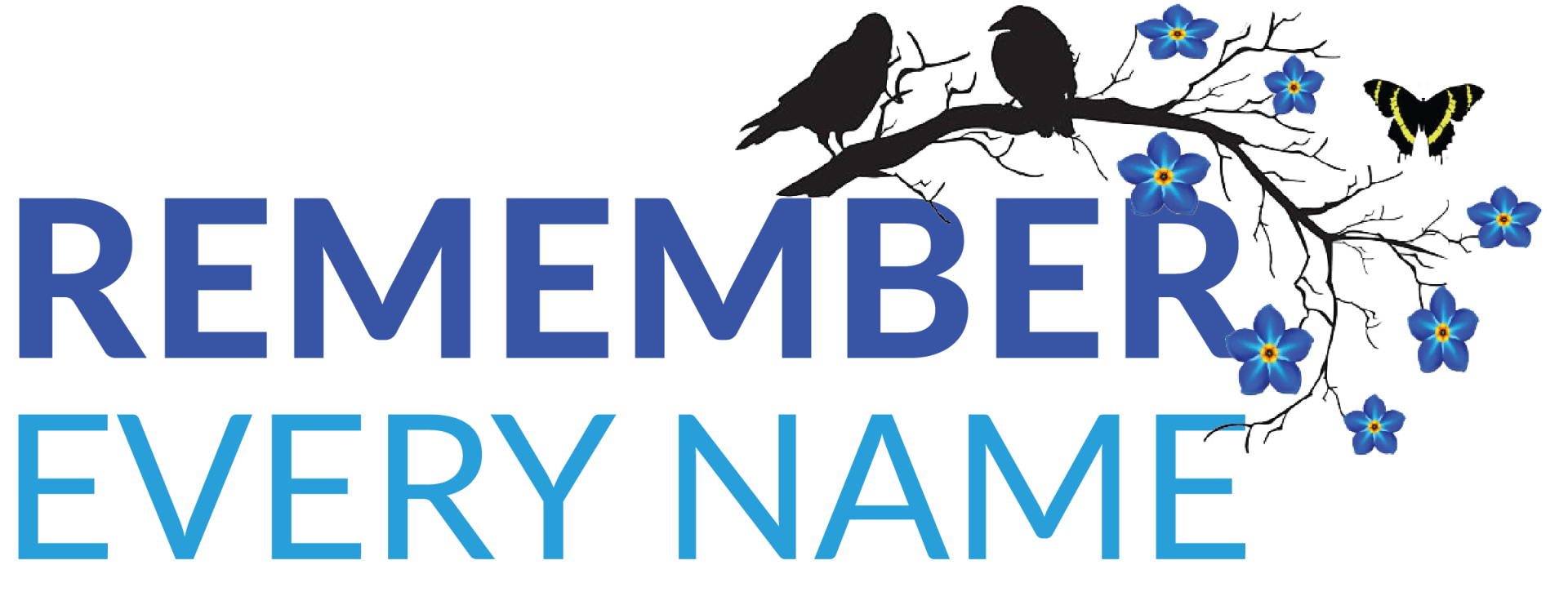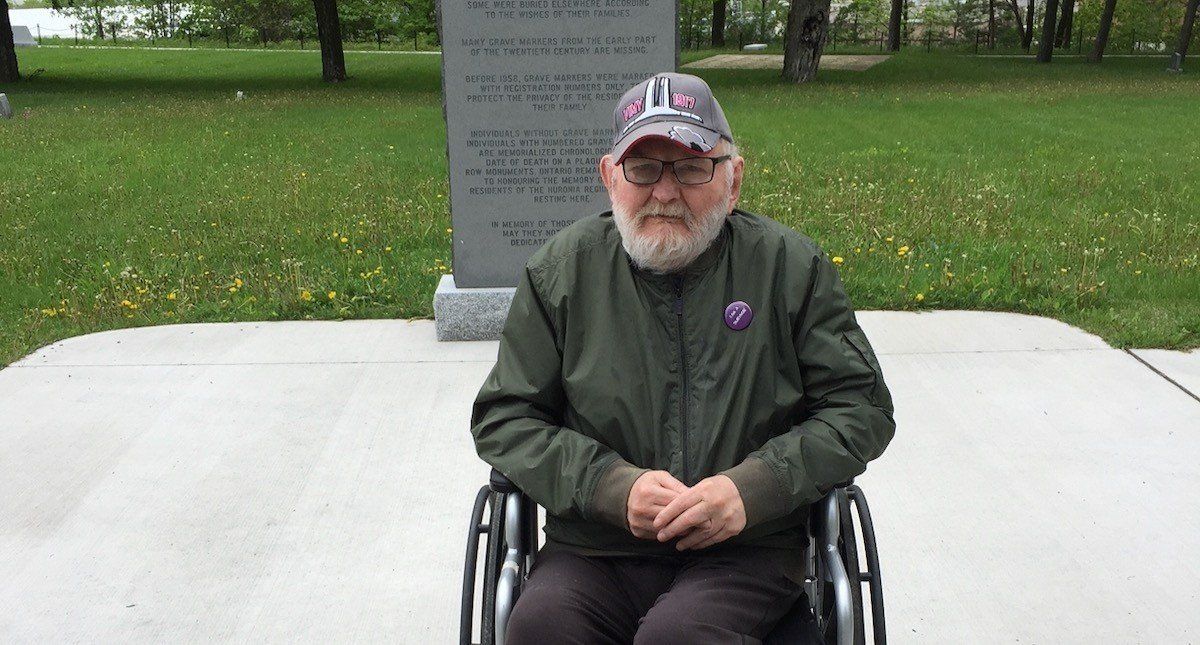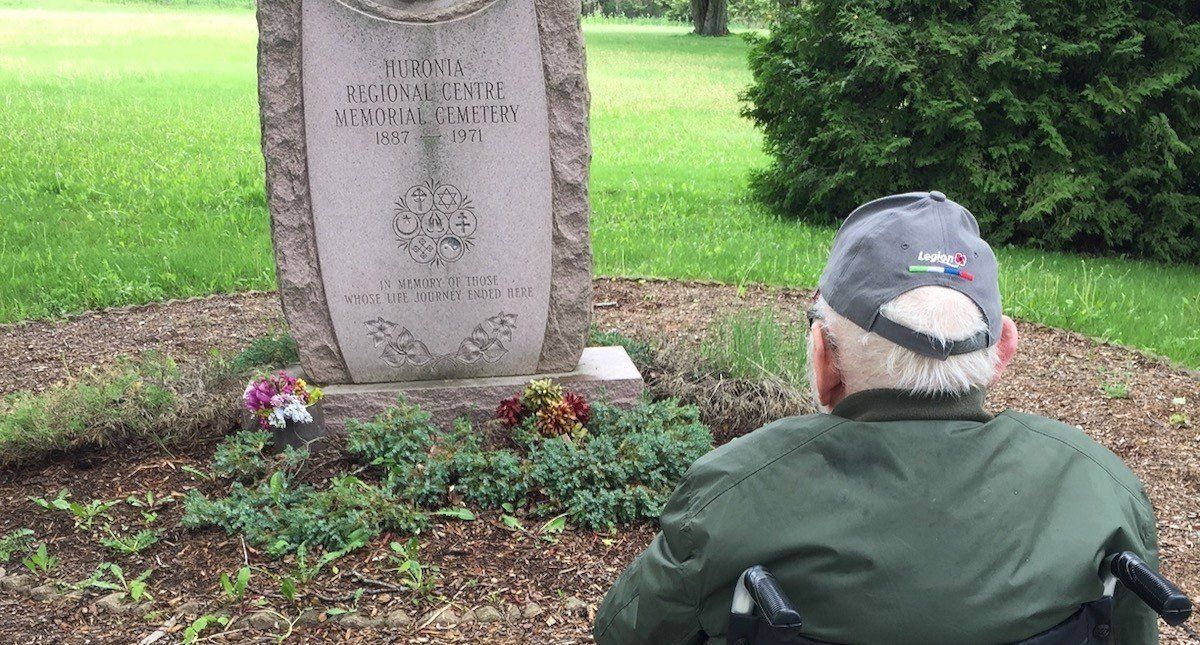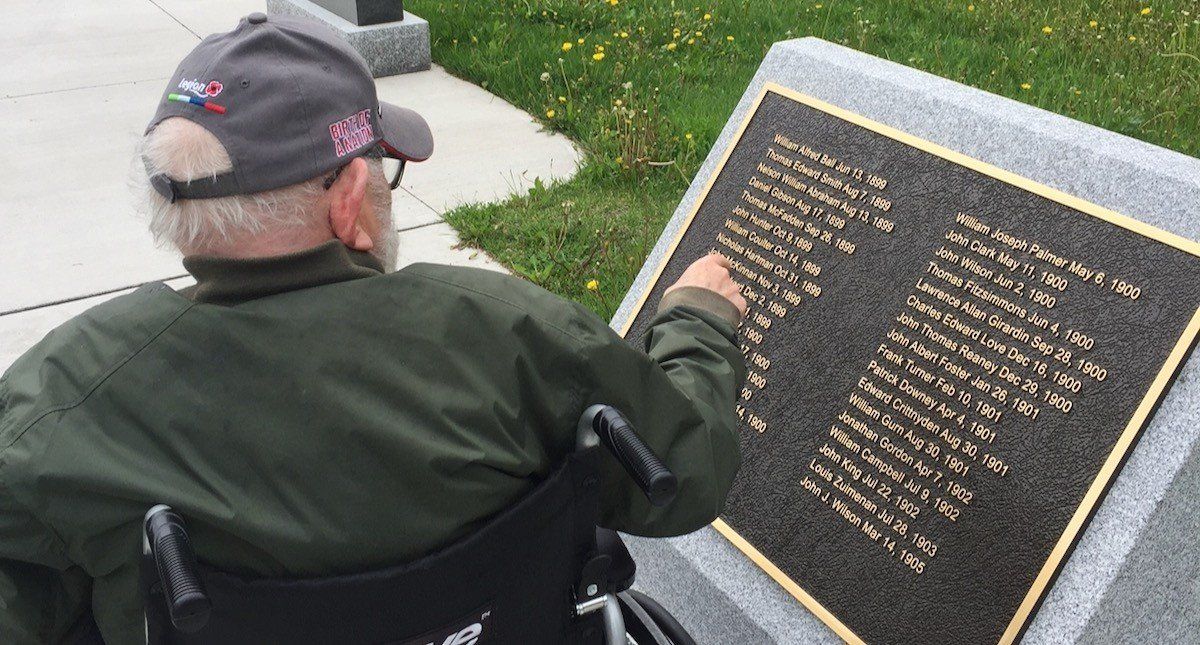Barry Goes Back to the Institution
Written Mike Bonikowski
Published by Ben Drew, Founder Open Future Learning
Barry and I have been planning the trip for six months, and the day has finally come. We leave our little town and drive east and then north through the greens and grays of the last days of May, back to the institution.
Barry has not been back since he left it at the age of 35. He is turning 80 this summer. As we travel, he presents to me a list of names as they occur to him, men and women, friend and girlfriends and enemies, all presented with the coda “...died and is buried there.” He has recalled at least ten such names by the time we merge onto Highway 11. From there it’s a just a few minutes to the exit and suddenly we have arrived. I am caught off guard and unprepared, but Barry has been thinking about this day for a long time.
Barry sat in front of a memorial from the institution.
The institution is a ruin in progress, half-heartedly preserved by an embarrassed government. Closed in 2009 after a process of litigation in which Barry played a key role as witness and now more-or-less abandoned, it has never seen better days. The lilac trees on the grounds have run rampant and their scent hangs in the air throughout the green and sprawling grounds. The vultures that make their nests in the dead trees by the lake soar between the red brick buildings with interruption. The grass is shaggy and verdant and a home to the happy colonies of Canada geese and their young.
“That’s C Cottage,” says Barry, pointing out the window of the van. “That’s where I lived.” It’s square and red and seems to have no redeeming qualities despite of the heritage plaque that marks it for preservation. It looks like what it was: a warehouse for human misery, a role now delegated to buildings better suited for the role.
“There’s the laundry, and the boy’s infirmary. There’s the doctor’s house.” We circle the grounds until we are stopped by a security guard. When asked what we might happen to be doing cruising around an abandoned institution on a Saturday afternoon, Barry is quick to explain: “I was a patient here, from 1947 to 1975. I was brought here when I was seven years old. I was abused.” He begins to expand upon his experiences as a ward of the unkindly government, and the horrified guard quickly sends us on our way with his stammered blessing.
Barry sat in front of a memorial from the institution.
We continue our slow sad circumnavigation. Barry does not seem to have forgotten a single detail. “There’s the administration building. There was a fire, and the tower burned down. We all had to go outside in our underwear.” He recounts many other memories that took place in these now-empty buildings too horrible to record here. They have found their place in witness accounts of the lawsuit that finally emptied them, that made the government issue an official apology, and to compensate the survivors.
Our tour complete, we pick up lunch at the drive-through down the road. “This was the potato field,” Barry remembers. “I used to work here.”
Institutions have been on my mind lately, increasingly. We are making our journey to the institution in the heart of the pandemic of 2020. Back at the home Barry shares with four other men, things have taken on an increasingly institutional tone. No one has left the home, except for drives such as this one, in nearly four months. All trips and programs have been cancelled. Those with hard-won employment have been laid off. All-important measures of independence like public transit have been revoked. Church is a memory. Even family visits are a thing of the past, and I have had to personally forbid family members from coming to the house when not able to guarantee physical distancing. The risk is simply too high. All that matters anymore is keeping the virus out of the house, getting the men through this alive to exercise their rights another day.
Barry sat in front of a memorial from the institution.
I have been the face of these restrictions, exercising authorities I could never have imagined holding six months ago. I am the one who says “no”, from behind a mask that hides my all-important facial cues. The dictates of doctors rule our days, as they did in the days of the institution. The rights and the person-centered plans that have guided all our policies and practices have been put on hold in the name of health and safety.
I can’t disagree with these restrictions. If COVID-19 found its way into Barry’s modest back-split home it would quickly wreak the same destruction that has been seen in so many other congregant care facilities. It is, in every sense, a matter of life and death.
But one wonders for how long after the rest of the world drifts back more-or-less to normalcy Barry and his housemates will remain prisoners to their own safety. Power is notoriously hard to surrender, once taken hold of. The staff who worked at the institution, who committed so many hundreds of thousands of acts of mercy and cruelty over the decades, are my forebears. The virus has, in many ways, made me the inheritor of the power they had. I hold the keys now, though I do not want them.
We cross Memorial Drive to a small green space we’ve come to see, the new memorial raised in 2019 on the site where more than two thousand men and women and children and infants are buried. Barry touches the names on the plaques and reads out the years in which they died, many from abuse or neglect, all of them cut off from the rest of a world that was encouraged to forget them. “Remember Their Names” read the memorial, and Barry does. We look for the ones he listed on the drive here, but there are too many to read through, and he is getting tired. In his olive green jacket Barry looks like what he is: a veteran visiting a memorial to fallen comrades. He leaves the pot of flowers he has brought beside the granite stone that reads “In Memory of Those Whose Life Journey Ended Here”. We sit among the dead and eat our burgers as the wind picks up. Then we simply sit, the survivor and the abuser’s heir, looking out across the field that holds those who did not survive the authority placed over them. I feel like I should say something, but there are no words for this. Barry and I return to the van and begin the journey back home.
It is Barry who breaks the silence, as we reach the highway: “They’ve all gone to heaven, and no one can harm them anymore.” I nod, grateful for his epigram. The silence extends until, unable to bear it any longer, I turn on the oldies station.
Much has changed since the institutions were closed, but harm can still be done on this side of heaven. But if harm is still possible, then so is healing, and so too is the hope that we can find a better way of helping, side by side with those we support.



